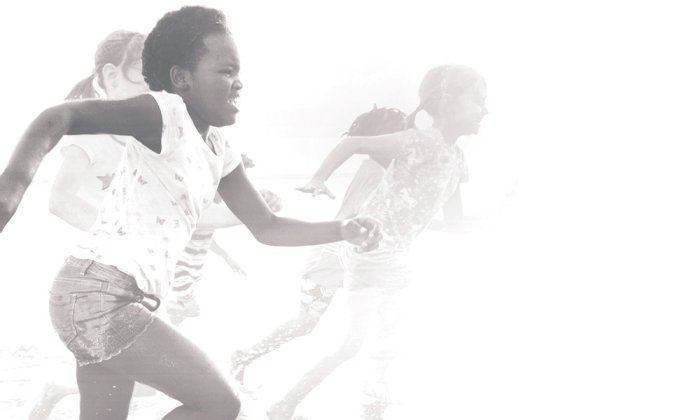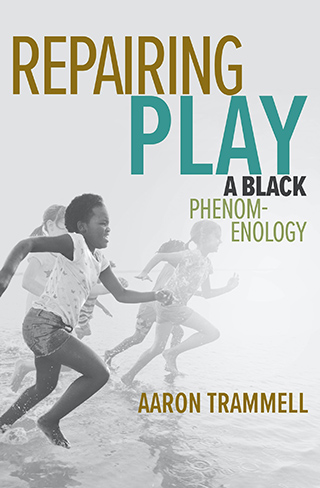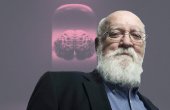The Dark Side of Play

When you think of play, what comes to mind? Most people have some mental model of the term: Play is fun, and it’s often pleasurable; play is universal, interspecies even; it is consensual or voluntary; and, finally, play is a behavior, something you do. There is more to it, of course, but for most folks that will suffice.

Yet this definition of play is only half-baked. I want to convince you that an inclusive, and thus reparative, definition of play is as painful as it is pleasurable, as individual as it is universal, and as mandatory as it is voluntary. If this interests you, by all means, read on.
The Black radical tradition is filled with stories of slave ships. It’s also replete with tales of art, music, and other forms of play that have little to do with games. “That’s the sound of the men working on the chain gang,” goes the refrain of an old Sam Cooke song. The men in the song are singing, but they’re also in pain. They’re singing about how agonizing their work is and how miserable they are. The singing itself gives them hope. They’re playing. Play as read through the lens of the Black radical tradition is about diving into the messiness of life, seeking a philosophical praxis that is down, around, outside, and always just out of reach.
Torture helps paint a more complete picture of play, in which its most heinous potentials are addressed alongside the most pleasant.
The trauma of slavery in North America is not only remembered through storytelling and song; it’s also memorialized in actual forms of play. Among the most mythic and controversial games that young Black children played in the postbellum (post–Civil War) United States was “Hide the Switch.” In this game, players would root around for a hidden switch — a flexible tree branch used for corporal punishment — and once found, the finder was granted free rein to flog the other players, who attempted to parry the attack. Historians considering the game’s persistence within slave culture have been challenged by it because the game reinforces the martial conditions of bondage. Many explanations have been offered to explain its endurance, often as a form of “coping.” Some historians suggest that the game allowed children to practice avoiding punishment. Others believe that the game allowed enslaved Black children a brief moment of liberation by allowing them to role-play being the “master.”
Both explanations are ultimately uncomfortable, as they attempt to reconcile the violence of the experience of Black folk descended from slaves by drawing on the inevitable lighthearted connotations of play. Historians thus perpetuate a trend in which torture is either reduced to a carnivalesque inversion of power dynamics — where the victim becomes the oppressor — or violence is reduced to discipline, a tactic for living within its inevitability.
In other words, by defining play only through its pleasurable connotations, the term holds a bias toward people with access to the conditions of leisure. Indeed, torture helps paint a more complete picture of play, in which its most heinous potentials are addressed alongside the most pleasant. In so doing, the trauma of slavery is remembered and re-embedded in its very concept. In rethinking the phenomenology of play — that is, how it is experienced differently by Black, Indigenous, and People of Color (BIPOC) — one begins to see the more insidious ways that play has functioned as a tool of subjugation.
Crows play. Researchers who observe their behavior have found seven main practices that resemble what philosophers call “play.” Crows manipulate objects for no apparent reason, hide things, and perform tricks while flying. They mess around with water while bathing, slide down slopes, vocalize aimlessly, and hang on branches upside down.
These scavengers might be more helpful in addressing the problem of play than one might initially think. Although animals play, their play is unproductive. The canon of play theory derived from the work of Dutch historian Johan Huizinga makes a crucial, influential argument that left an indelible mark on a good deal of research that has followed: Play itself is productive of civilization.
In his influential 1938 book “Homo Ludens,” he writes, “Now in myth and ritual the great instinctive forces of civilized life have their origin: law and order, commerce and profit, craft and art, poetry, wisdom and science. All are rooted in the primaeval soil of play.” He implies that “civilized” is all that is legible to Western European “civilization.” The opposite, then, is barbarism. Likewise, he implies that the civilized is that which is human, while the barbaric is that which is not. Thus, Huizinga assumes that people whose customs are not legible to Western Civilization act much like animals. They are like the crows, trifling with baubles with no particular goal or end in mind. For the presumably “civilized,” play is always constructive of something.
But experiencing play and civilization as pleasures is a privilege that is at odds with the lived experiences of BIPOC people. “Civilization” has disciplined BIPOC people for centuries: It is the colonial force that put a boot to our necks, stole our land, and enslaved us. If play is productive of civilization, then by extension play must have had a hand in the evils of colonization. To read play as mere leisure is a privilege, a privilege afforded to White people. This is why stereotypes of Black people goofing off, having fun, and hanging out are read so negatively — leisure is part of White privilege. A Black man at a country club? He’s going to be watched closely by security. I’ve had to turn over my bags at game shops and comic book stores as dubious clerks cased and profiled me.
Gamergate, QAnon, and other avenues of radicalization today often use play as an alibi for aggressive, violent, and discriminatory behavior.
Take, for example, the Black men in the blatantly racist Disney film “Dumbo.” (Here’s a bit of trivia: In the original release, the main crow was named Jim Crow — an allusion to the offensive minstrel performer who used that moniker in the 19th century; Disney later changed the character’s name to Dandy Crow in an effort to make the movie less obviously offensive.) When they aren’t depicted as animals, they are hard at work. The “jive crows” are contrasted with a Black chain gang (called the Roustabouts) elsewhere in the movie. The Roustabouts are depicted as lazy and drink, smoke, and play instead of work. Particularly offensive are the ways that the Roustabouts sing that their work is “happy,” while swinging heavy hammers. On all levels, the message is clear: If you’re Black you better wear a smile and be “happy” no matter how painful or traumatic your work is. You’re going to be seen as lazy no matter what, and you sure don’t get to say what counts as fun.
So how did we come to agree upon a canon of play theory that colludes so readily with the ideology of White supremacy? This question, in my opinion, is philosophical in nature. It asks us to review theories about what play is — in other words, research that has been done on the phenomenology of play. Phenomenology is a domain of study that offers a scientific and cultural account of how practices, play for instance, are structured. It asks questions about why several experiences of the same thing, or “phenomenon,” differ from one another. Because I argue that repairing play means understanding how play is experienced differently by BIPOC people, the argument is phenomenological in scope. So is the canonical argument made by Johan Huizinga.
Huizinga argues that by playing, we make society, or more specifically, “civilization.” His theory suggests that there is a structure to both “civilization” and play and that these two structures are linked. The problem with Huizinga’s argument is that his definition of “civilization” is almost exclusively a White European one. It is less an argument about what happens when people play and instead a phenomenological argument about what happens when White people play.
Because Huizinga only accounts for European “civilization” in his writing, his account of play is naïve. It renders both play and “civilization” in mostly positive terms, and thus sidesteps the abuses, traumas, and pain that play connotes for BIPOC people. Margaret Carlisle Duncan, in her close reading of “Homo Ludens,” notes this exactly. She explains the contradictions of Huizinga and argues, “Play scholars have failed in their attempts to conceptualize play precisely because they have ignored the ideological dimensions of their subject which lie not in play but in discourse (i.e., reflection and talk) about play.” Otherwise stated, play theorists have a tendency to read play as phenomenology, not ideology.
I concur with Duncan’s larger point, to assume that play exists outside of discourse, and thus ideology, is a romantic and dangerous notion. As we know well today, play is political, and approaches to the topic further the dynamics of White supremacy when they are naïve to the implications that play is a form of power. Repairing play deliberately centers BIPOC people for this reason. Challenging ideology means offering alternatives to it and drawing on histories and experiences of the invisible, exploited, and otherwise abused.
Duncan advocates that we understand the rhetoric of play precisely so that we can critique its ideological character. Yet this solution sits uncomfortably with me as I read it in the aftermath of the radicalization of far-right politics in 2021. Gamergate, QAnon, and other avenues of radicalization today often use play as an alibi for aggressive, violent, and discriminatory behavior. Doing it “for the lulz” has become a callous expression of how the rhetoric of play as “free” is often used to defend the most egregious instances of play as violence. Thus, although I concur with Duncan that play is ideological, I find myself drawn to Huizinga’s interest in the terms phenomenological dimensions. Because phenomenology considers the experience of inhabiting a body, I believe that Huizinga’s mistake was simple: He didn’t consult any BIPOC people about their experiences of play.
A Black phenomenology of play is both one of pain and pleasure. A recognition of how play can be painful would have resolved the contradictions that Huizinga himself fretted about while writing. Mathias Fuchs’s historical work suggests that Huizinga’s unpublished forward for “Homo Ludens” reveals a critical Huizinga concerned with how his theory of play may have appealed to the ideology of Nazi Germany as it “is often read in defense of ‘free activity,’ ‘fixed rules,’ and ‘orderly manner.’” Even Huizinga, in reconsidering his own work after World War II, was aware of how the violent tendencies of play might complicate the potentials he would, unfortunately, term “civilized.” Huizinga was watching the cops in Germany commit genocide. In returning to his own theories, he became troubled by their contradictions. If only he knew a few more Black folk, they would have told him that “civilization” ain’t all it’s cracked up to be.
It is pertinent then to reconsider play through a comparative approach that is critical of dominant theories. In 1938, Huizinga first approached play as a cultural phenomenon. The anthropological scholarship in his day approached rationality as an innate biological characteristic of “man.” Huizinga hoped to disrupt this approach to what he termed the “human” by juxtaposing the “rational” society against the “playful” society.
In Huizinga’s definition, play is the preconscious act that is often labeled “ritual,” “sacred,” “natural.” When unspoken (and therefore unlabeled) play manifests as a series of behavioral patterns common to both man and animal, listed as “order, tension, movement, change, solemnity, rhythm, rapture.” For Huizinga, there is a fundamental organizing function to play behavior. While efforts to explain it are often cast as ritual or myth, these labels are ultimately secondary. Because in Huizinga’s work, play is the preconscious driver of ritual activity. Moments of play are fleeting and temporary, but there is a finite trace of play’s significance in organizing the whole of Huizinga’s imagined lifeworld.
Huizinga describes play as fundamental to a “later phase of society.” This is a clear dog whistle for situating White European society as superior to BIPOC cultures that era anthropologists read as primitive. Although Huizinga takes steps to clarify that he feels cultures who primarily engage in ritual play might still be considered “man,” it is worth noting that language that stratifies society into stages of development has been historically used as a way for White supremacist groups to argue for the virtues of “civilized” Western European culture. Although it is not clear how Huizinga disambiguated the crowing of colonized and indigenous people from the jargon of birds, he felt strongly that some social structures were more advanced than others. While Huizinga’s approach is broad in its scope, at least one element of his argument still drives the dominant discourse: that play is a cultural (not biological) phenomenon. This differentiation is best seen in the work of Jean Piaget, a psychologist who argued the opposite.
Taking a psychological standpoint, Piaget considers play an intimate part of our physiological makeup. While Piaget concurs with Huizinga’s opinion that play is a preconscious act, he argues that it is biological in nature — a step in the development of our mental sensemaking organs. The standpoint of cognitive psychology through which Piaget approaches his work is relevant insofar as it considers play a foundational psychological driver of rationality. Piaget’s theory of play presumes a type of rationality informed by the Western European enlightenment. This kind of rationality has historically excluded the cultures and practices of BIPOC people from the discourse of philosophical thought.
Where Huizinga took a broad approach to play and Piaget adopted a biologically essentialist perspective, the French literary critic and sociologist Roger Caillois analyzed play sociologically. Caillois, who focuses specifically on the play of games, is somewhat critical of Huizinga and Piaget’s work. He finds it curious that both omitted games of chance in their writings, and argues that this exclusion may relate to the audiences for which these scholars wrote. For Piaget, the moralistic connotations of gambling, for example, may have made its inclusion unpalatable to the educators interested in understanding play as a process of learning. As for Huizinga’s omission, the inclusion of games of chance would threaten to undo his argument regarding the primacy of play as a civilizing cultural form. This would call into question those instances in which play is arguably at its most vertiginous. These are the moments in which gambling allows for individual transcendence of the economic order, like buying lotto tickets. These moments are also the most difficult to regulate and have found their strongest opponents in legal, and religious codes.
For Caillois, White European society is explicitly the focus of play. He categorized Australian, American, and African aborigines “primitive societies” and referred to them as “Dionysian” contrasting them with the “rational” cultures of the Incas, Assyrians, Chinese, and Romans. Mimicry (role-playing) and vertigo (“an attempt to momentarily destroy the stability of perception,” as Caillois defined it) which he associates with “primitive” cultures and rituals, are said to corrupt competition and chance, which are associated with what Caillois saw as more sophisticated cultures. Competition and chance, of course, yield the meritocratic structures that underlie much of White European society. Importantly, it is vertigo that corrupts competition and mimicry which corrupts chance, not the other way around. An anti-colonial approach to this problem might ask why it is that competition and chance are lauded in this instance, while mimicry and vertigo are decried? Caillois classifies these combinations as “forbidden play” and even maps them to cultures accordingly. His work speaks to the prejudice he brought to it, as he was concerned with miscegenation between different aspects of play.
Mihai Spariousu shows how deeply indebted thinking about play — as typified by Huizinga, Piaget, and Caillois — is to the canon of Western thought. In his book “Dionysus Reborn,” Spariousu compares approaches to play in the social sciences, philosophy, and literary theory. He locates a split in the Western consciousness along rational and prerational axes dating back to ancient Greece. Spariousu suggests that theory on the play concept has reflected this split.
Games, for the most part, are theorized in all these contexts as rational, creative, ordered, and progressive extensions of play. Although games are often said to reflect the social order, such a sentiment fails to question the racial politics of this social order. Indeed, any social order that reads the emotional against the rational has justified slavery and encouraged violence against women, nonbinary folks, and people of color in the name of “rationality.” Spariousu’s analysis, though uncritical of the cultural dynamics that take place within the social order produced by play, is spot on. We live in a society that denigrates the lived experiences of minoritized people in favor of a presumably “rational” set of living conditions in which the police are used to control a presumably emotional and violent BIPOC population.
Although games are often said to reflect the social order, such a sentiment fails to question the racial politics of this social order.
To repair play, or to “write back” through the ways we play, we must first endeavor to produce a space where ludic narratives can aspire to tell painful stories alongside the pleasurable. It was the pleasures of trade — exotic spices, resources, free labor — that led to colonialism as an economic paradigm. Likewise, European merchants and slavers alike were captivated by the promise of wealth through trade. In this sense, it was the affect of pleasure, its cruel promise, that led them to exploit populations and people as if they were resources in the global trade “game.”
Repairing play means tending to the painful aspects of this discussion. Returning to the trauma of colonialism to explode the paradigm of play from within. Yes, it is important that players enjoy agency as they engage in postcolonial play. It is imperative, though, that they use this agency to remember the abuse and trauma of colonialism. For without it, the play they engage in will haplessly collude with the colonialist impulse that reads play through the racist dynamic of “civilization” and the barbaric. Despite this, I remain optimistic that we can repair play and that doing so is key to decolonizing a space that has long exploited the labor, feelings, and experiences of BIPOC people globally.
Aaron Trammell is Associate Professor of Informatics at the University of California, Irvine. He is the Editor-in-Chief of the journal Analog Game Studies and Multimedia Editor of the journal Sounding Out! This article is adapted from his book “Repairing Play.” An open access edition of the book is freely available for download here.



